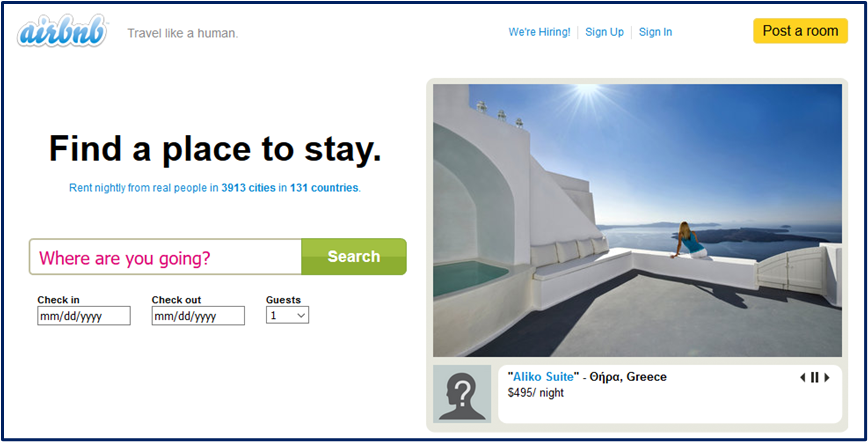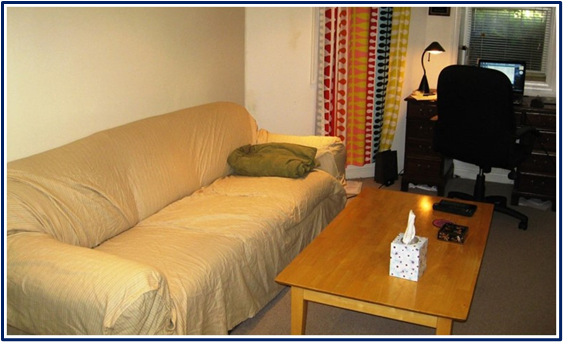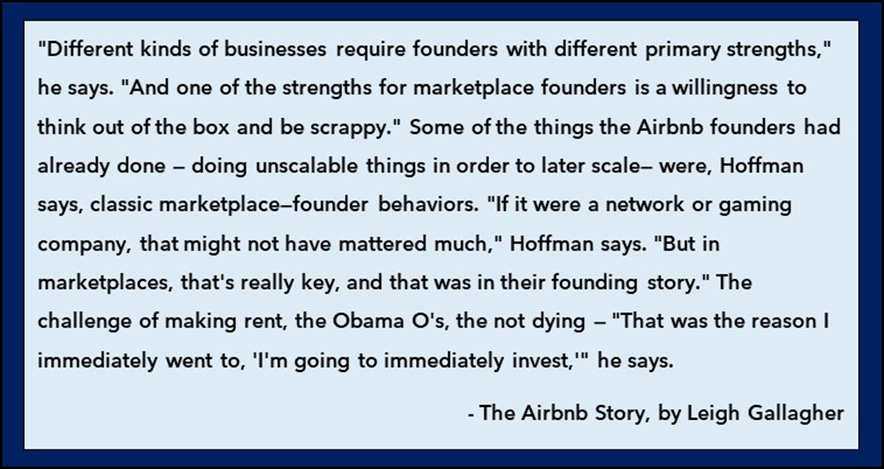Airbnb Business History
From Starving Artists to Multi-Billionaires Pioneering a New Industry
Welcome to Speedwell Research’s Newsletter. We write about business and investing. Our paid research product can be found at SpeedwellResearch.com. You can learn more about us here.
This is an excerpt from our research report on Airbnb. If you prefer to listen to it, you can find a podcast reading of it here: Apple, Spotify.
In the future we will release a Company podcast episode that covers all things Airbnb, so make sure to follow The Synopsis Podcast! (Apple, Spotify)
Founding History.
The odds of avoiding the life of a “starving artist” weren’t looking great for Brian Chesky, who enrolled in the Rhode Island School of Design (RISD) in 1999. As an art school student, his mom often peppered him with what seemed like a modest request: just get a job that can provide healthcare. After he learned about Industrial Design, which was pitched as “learn to design a toothbrush, rocket, and everything in between”, he switched his major to that in what felt like a partial compromise to his mom.
Joe Gebbia, a close friend of Brian’s at RISD, was on a more entrepreneurial route. He designed a seat cushion, called “Crits Buns”, named after the lengthy critiques, or “crits” as they were called, that the art students had to endure from their teachers. When he won a design award for the cushions at RISD that paid for the development of the product, he started a company to sell them. Gebbia always wanted to start a company with Brian though, and at graduation, had to confess something to Chesky which would prove to be eerily prescient: “There’s something I need to tell you. We’re going to start a company one day and they’re going to write a book about it”.
After college though, Chesky instead took a job at an industrial design firm in LA. Gebbia wouldn’t stop bugging Brian about moving up to SF, where he was based, and the perfect place for them to participate in creating the next generation of start-ups. When Gebbia got his CritBuns in MoMa, he sent one to Chesky as a “...subtle nudge. It was a reminder. Don’t forget, we could potentially be creating things too”. Chesky liked the energy of SF when he visited but was understandably reluctant to quit his job for an unspecified business and lose that “lauded” healthcare that legitimized his career in his parents’ eyes.
However, Chesky began interviewing for new jobs in SF and started mentally committing more to the idea of moving. When faced with both of Gebbia’s roommates suddenly moving out, and growing blasé of his day job, Brian took a leap and quit his job with nothing lined up. As the story goes, when he got to SF he was informed rent was $1,150 a month—and he only had $1k saved up.
With empty space in the apartment, after stumbling around various ideas, they thought why not try to rent it out for a few days. Their target customers would be people who wanted to cheaply travel to SF for an upcoming design conference. Gebbia had three air mattresses, so they looked for three travelers. While neither knew it at the time, they had just started to conceive of the business they would build together.
Business History.
The two hired a freelancer to mockup a simple website that said “Two designers create a new way to connect at this year’s IDSA conference” with a short explanation on what they would provide. For just $80 a night, budget travelers would get a place to stay and breakfast. They emailed the conference organizers and used their RISD alumni status to help spread the word. It was an odd enough idea that many blogs were happy to write about it. They descriptively named the “service” AirBed & Breakfast.
They were able to get three travelers and make rent for the month. With that relief, they moved on to think about what business they should start…
Despite their success, they weren’t sold on continuing with AirBed & Breakfast. Not only was this idea not eagerly embraced by Chesky and Gebbia as a potential business, but feedback was universally poor too. When Chesky found a designer he highly looked up to and explained the idea to him, his response was terse: “I hope that’s not the only thing you’re working on”.
After meddling with several other ideas, including a roommate matching service, they eventually turned back to the AirBed & Breakfast concept. To bring it to fruition, they roped in a previous roommate of Gebbia, Nathan Blecharczyk, who was a skilled engineer that paid for his way through Harvard by selling marketing software in high school.
Extrapolating from their past “success”, the service would focus on conferences and events where it be hard to find a place to stay affordably. They relaunched AirBed & Breakfast during South by Southwest as a new site to get more press, but the reception was hardly warm with just two customers… one of whom was Brian Chesky.
Raising funding wasn’t going much better. They were looking for $150k for 10%, but not only was interest low, people were actively repelled by the idea. Chesky recalls one meeting where an investor got up in the middle of it to put more money in his parking meter, but never came back, leaving his partially drunken smoothie on the table.
When future president Barack Obama was set to speak at the DNC in Denver, it seemed like another good event to test their service as many attendees would be young traveler on a budget. They were out of money though, and had racked up personal debt of $20k. They thought back to one of their brainstorming sessions and decided to revisit a somewhat gimmicky idea: “what if we sold cereal?” Since they were targeting the DNC, it only felt appropriate to design Presidential election themed breakfast cereal.
They put their design degrees to work and created two cereals: Obama O’s and Cap’n McCain’s. After being dismissed by all of the cereal manufacturers, they raided local San Francisco markets looking for the cheapest cereals and hand-glued the boxes, which a RISD alum offered to print in exchange for payment after they were sold. As they assembled cereal boxes, Chesky was as doubtful as ever about their start-up. He’d later recall thinking at that time, “I don’t remember Mark Zuckerberg assembling cereal boxes”.
Their creativity paid off though. Not only were they able to make $30k from selling the boxes at $40 each, but sending the cereal to the press generated a lot of media attention. A TechCrunch blog got them so much traffic that the site crashed. They launched AirBed & Breakfast for a third time in August of 2008.
Many people looked at AirBed & Breakfast and saw it as a weird social experiment, if not an outright danger, of sending strangers to people’s homes. But people with knowledge of the early 1900s actually saw it as a bit of an anachronism, an ode to the past when it was common to have a boarder in your home. With 800 rooms listed in Denver and 80 guests booking during the DNC, the idea was validated.
However, they started to see the problem with focusing so much around events. It required a big push of press and marketing to build traffic which then disappeared immediately afterwords. They started to think that they should broaden the concept. Instead of just being event-focused, they would be about booking a room in a home as easily as it is to do with a hotel.
While Chesky and Gebbia were excited about the Airbed and Breakfast idea, they still had plenty of doubts. Their third cofounder, Blecharczyk, was only partially invested and preparing for a move to Boston with his then girlfriend. Without any funding, it was hard to see how this project progressed any further.
Out of desperation, Chesky was talked into applying for Y Combinator. (He was reluctant because Chesky thought it was for pre-launch companies, not companies that launched 3 times already!)
They interviewed with YC Founder Paul Graham, but it didn’t exactly go well. His line of questioning started with, “People are actually doing this? What’s wrong with them?” Believing that they blew the opportunity, Gebbia pulled out the cereal boxes they made as a Hail Mary—even after Chesky and Blecharczyk told him prior to absolutely not bring those to the meeting, as they believed it was evidence of their desperation.
Graham didn’t understand why they were giving him what he considered to be a weird “gift”, but thought it was on-brand for an equally weird pitch. However, when the cofounders explained they made them and sold them for $40 a pop, Graham’s tone changed entirely: “You guys are like cockroaches. You just won’t die”. (He later recalled “If you can convince people to pay forty dollars for a four-dollar box of cereal, you can probably convince people to sleep in other people’s airbeds”.) They got into Y Combinator. Blecharczyk agreed to stay in San Francisco for three more months as they made an earnest go at the idea.
While traffic continued to wane after each event, there was still a small number of users, primarily in NYC and Washington D.C., that were using the service consistently. Graham instilled in them a lesson from Jeff Bezos—it is much better to have 100 users that love you than a million that “sort of like you”. Chesky and Gebbia would fly back and forth from Mountain View to talk to users of the product and test it themselves. They manually did all sorts of tasks like taking payment via checks in-person and shooting photos of places themselves since many people didn’t have a quality digital camera at that time.

Equally important was that they figured out an expanded use case for their product. At the time, they required that each guest be provided an air mattress, but some people had spare beds they wanted to rent out instead. Others wanted to rent out their whole apartment when they weren’t there. Neither was allowed under their current terms, so they loosened the rules and renamed in the process, dropping “AirBed” from the name to just be Airbnb.
In 2009, the funding environment couldn’t have been rougher, and despite some product validation, they struggled to generate any interest. Incredibly though, after a swath of less prestigious VC firms passed, a partner at Sequoia, Greg McAdoo, was interested. He saw Airbnb as also tapping into the “vacation-rental” industry, a sector that Chesky said he hadn’t even thought about.
Sequoia decided to invest $585k, and Youniversity, a fund started by Jawed Karim (YouTube Cofounder and PayPal Mafia), Kevin Hartz (Xoom and Eventbrite Cofounder), and Keith Rabois (LinkedIn VP + PayPal Mafia), invested $30k, giving Airbnb a valuation of $2.4mn. Not only did this provide them with much needed financial relief, but the validation from Sequoia helped make them legitimate almost overnight. The product’s success led to further financial relief—by August of 2009, they were doing $10k a week in revenue on $100k in volumes.

In 2010 they saw 800% growth, with 800k nights booked by the end of the year. An ad from 2010 emphasizes affordability, noting Airbnb is a “clean, functional affordable place to stay”. That year they raised their Series A, getting $7.2mn in funding from Greylock Partners, led by Reid Hoffman, in addition to Sequoia and Youniversity.
Airbnb was growing rapidly, and by the middle of 2011, it had booked more than 2mn nights with a presence in almost 100 countries. Its virality was evidenced by the 30mn monthly visitors their site received. Their business model was simple: charge hosts 3% of the booking value and guests between 6 to 12%, plus any cleaning fee the host applies. This simple fee structure generated tens of millions in revenues for 2011 (an estimated $40-50mn).
Whereas a mere three years, they were racing to supermarkets to buy bargain cereal to resell, by July 2011 they officially became a unicorn after Andreessen Horowitz led a $112mn round, giving them a valuation of ~$1.2bn.
Despite their success, they still had competition in HomeAway.com, VBRO.com, and Couchsurfing.com. However, despite a long lead time and more listings (HomeAway had an estimated 500k listings versus Airbnb’s 100k at the time), Airbnb was outmaneuvering them.

Creative ideas, like creating a mechanism for Airbnb hosts to push their listing to Craigslist (which had much more traffic at the time than Airbnb) and then bring the transaction back to Airbnb when the user clicked through the listing, helped them compensate for their low web traffic early on.
This Blecharczyk-designed integration was lauded by Silicon Valley engineers. He was also early to utilize Google Search keywords and Facebook Ads, both of which (especially Facebook) were far cheaper back then...
This concludes the free excerpt of our report, to read the rest of the 108-page report, become a full Speedwell Research Member today or you can purchase a single report!
Airbnb Table of Contents
Founding History
Business History
Business
Industry
Competition
Booking Holdings
Expedia Group
Other Competition
Competitive Dynamics
Why Airbnb?
New Services and Other Bets
Experiences
Tangential Opportunites
Moonshots
ROIC and Capital Allocation
Revenue Growth
Valuation
Risks
Summary Model
Historical Model
Summary Model
Conclusion
(Please reach out to info@speedwellresearch.com if you have any issues or need to speak to us to become an approved vendor in order to expense the membership).
Read more about our Airbnb Report here.
The Synopsis Podcast.
Follow our Podcast below. We have four episode formats: “company” episodes that breakdown in-depth each business we write a report on, “dialogue” episodes that cover various business and investing topics, “article” episodes where we read our weekly memos, and “interviews”.
Speedwell Research Reports.
Become a Speedwell Research Member to receive all of our in-depth research reports, shorter exploratory reports, updates, and Members Plus also receive Excels.
(Many members have gotten their memberships expensed. If you need us to talk with your compliance department to become an approved vendor, please reach out at info@speedwellresearch.com).




















